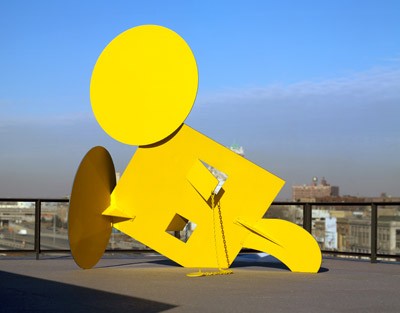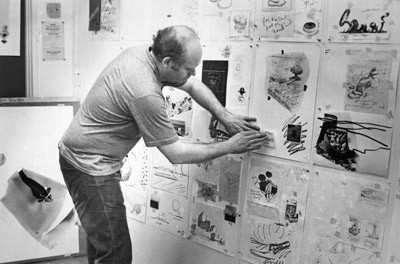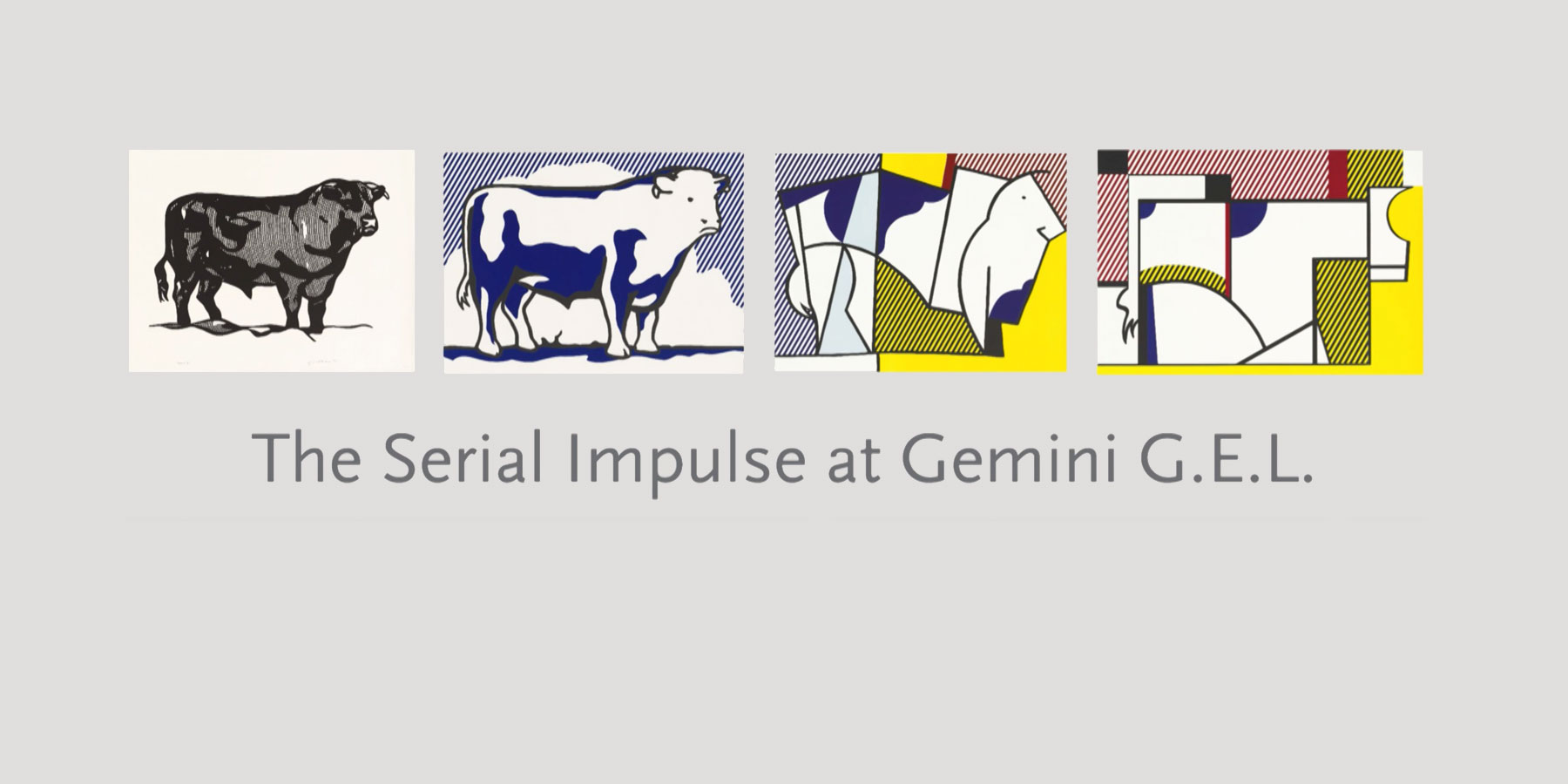During a two-month period in Los Angeles, Claes Oldenburg (American, born Sweden, 1929) filled more than a hundred pages with “scribbles and sketches” whenever and wherever “an idea struck” (his words). A selection of these pages appears in the 12 lithographs that make up Notes. The series is unified by Oldenburg’s penchant for curious commonalities, visual and linguistic rhymes between disparate objects: a cigarette-pack-shaped art museum; a nose tunnel; and body buildings. Testament to Oldenburg’s serial free association, the image clusters in Notes outline plans for what the artist calls “monuments.” These are fanciful proposals for commemorations of the commonplace—mundane objects, body parts, letters—presented at architectural scale and set into the landscape. Surreal, funny, and erotic, they are both serious conceptual projects and playful speculations, some of which feature motifs—Geometric Mouse, Sneaker Lace, Punching Bag—that were further developed in later works.
Claes Oldenburg, Notes, 1968

Claes Oldenburg, Geometric Mouse—Scale A, 1969/1971, aluminum, steel, paint, Collection Walker Art Center, Minneapolis, Gift of Mr. and Mrs. Miles Q. Fiterman, 1991

Claes Oldenburg selecting and arranging sketches for Notes at Gemini G.E.L., 1968, photograph, National Gallery Australia, Gift of Kenneth Tyler, 2002
The 12 lithographs were originally published with 13 text pages, a title page, and a colophon, in the form of an unbound book. The texts, all written by Oldenburg, appear in the slideshow above as image captions. The artist’s introduction to the series reads, in part:
These “notes” differ from the [sketched] originals in that they have been passed through the techniques of lithography and photography, and also in that sketches occurring on different sheets or at different times have been combined on one sheet. Both factors give an intensity to the page which is not found in the original note pages. It is not a matter of facsimile, but of concentrating and heightening the effect of flipping through the hundred or so pages which were done during this two month stay in Los Angeles—on the street, at parties, anywhere, when an idea struck. For me if an idea is not set down immediately, the form of it is lost (though the idea itself may remain). The exact correspondence to mood and situation is critical.
Link to Conversations with Artists: Claes Oldenburg and Coosje van Bruggen, 1995














